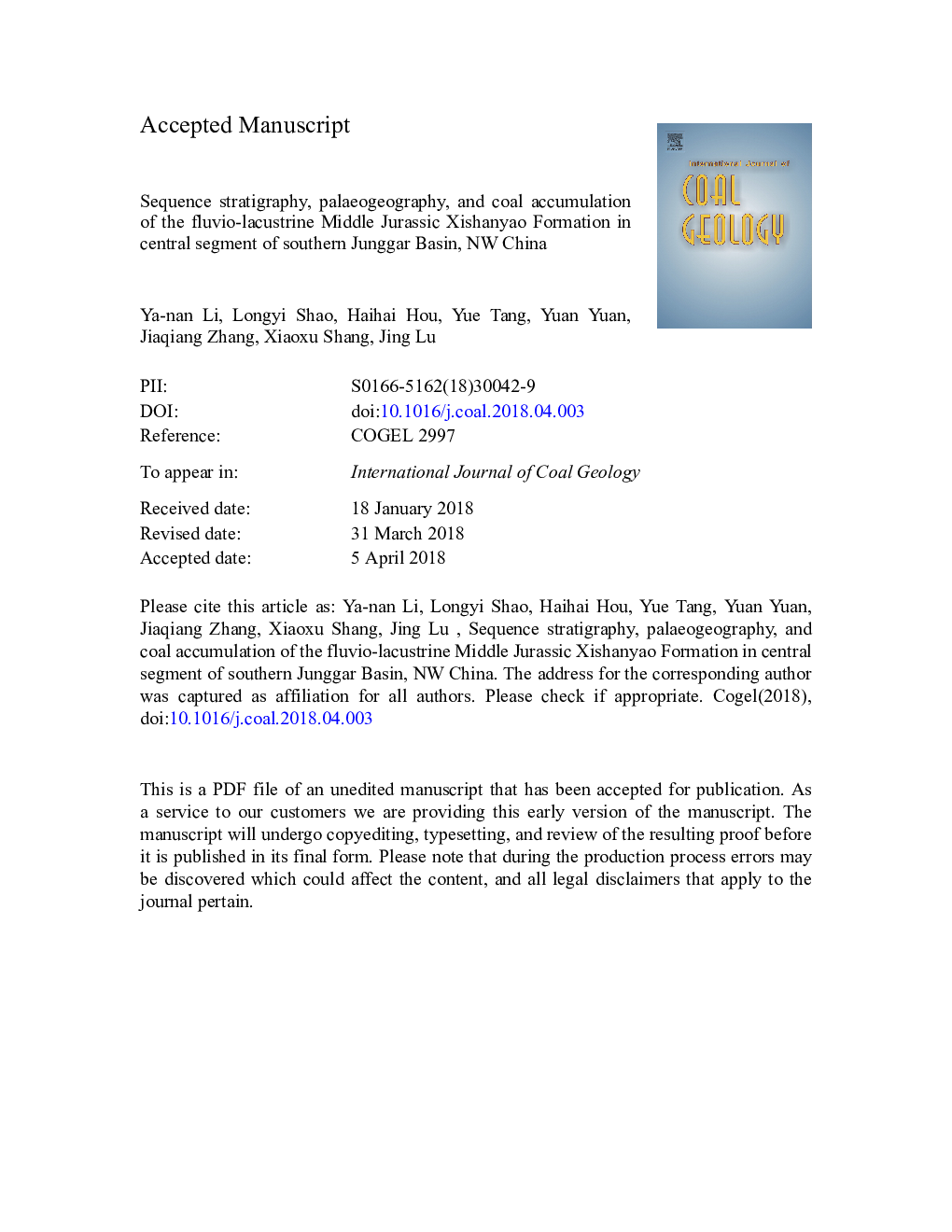| کد مقاله | کد نشریه | سال انتشار | مقاله انگلیسی | نسخه تمام متن |
|---|---|---|---|---|
| 8123367 | 1522511 | 2018 | 66 صفحه PDF | دانلود رایگان |
عنوان انگلیسی مقاله ISI
Sequence stratigraphy, palaeogeography, and coal accumulation of the fluvio-lacustrine Middle Jurassic Xishanyao Formation in central segment of southern Junggar Basin, NW China
دانلود مقاله + سفارش ترجمه
دانلود مقاله ISI انگلیسی
رایگان برای ایرانیان
کلمات کلیدی
موضوعات مرتبط
مهندسی و علوم پایه
علوم زمین و سیارات
زمین شناسی اقتصادی
پیش نمایش صفحه اول مقاله

چکیده انگلیسی
The depositional facies, sequence stratigraphy, palaeogeography, and coal accumulation in the fluvio-lacustrine Middle Jurassic Xishanyao Formation in the central Zhunnan (central segment of the southern Junggar Basin) coalfield, northwest China were analyzed based on outcrops, well cores, and geophysical well logs. Thirteen distinct lithofacies were identified ranging from conglomerate, sandstone, siltstone, mudstone, to coal. These lithofacies were grouped to five facies associations, which represent the braided fluvial, meandering fluvial, braided fluvial delta, meandering fluvial delta, and lacustrine depositional systems, respectively. Three third-order depositional sequences, S1, S2, and S3 in ascending order, were subdivided based on the erosional surfaces of incised valley fill sandstones with regional extent and the regional angular unconformities. The palaeogeographic maps of each sequence have been reconstructed based on a variety of contours of lithological parameters including the stratal thickness, coarse to fine ratios, sandstone percentages, mudstone percentages, and coal thickness. The results show that the preferred coal-forming swamps were mainly developed in the delta plain environments. The provenance includes the Yilinhabierga Mountains to the southwest and the Bogda Mountains to the southeast. Uplift of the Bogda Mountains occurred prior to S2 stage, resulting in the differentiation of the depositional environments in the west and east of the central Zhunnan coalfield. This background provided the basis for understanding the lake basin evolution and for the investigation of the controlling factors of the coal accumulation. The climatically driven lake level rise has exerted a major control on sequence stratigraphic framework under a relative stable tectonic regime. A six-period base-level change model was proposed, which evolves from LST, early TST, late TST, early HST, late HST, to FSST. The thick coals were distributed in the late TST in the landward areas in a sequence stratigraphic framework. The coal accumulation centers, represented by coal-rich zones, were located in the Huoerguosihe-Manasihe, Taxihe-Hutubihe, and Santunhe-Toutunhe areas.
ناشر
Database: Elsevier - ScienceDirect (ساینس دایرکت)
Journal: International Journal of Coal Geology - Volume 192, May 2018, Pages 14-38
Journal: International Journal of Coal Geology - Volume 192, May 2018, Pages 14-38
نویسندگان
Ya-nan Li, Longyi Shao, Haihai Hou, Yue Tang, Yuan Yuan, Jiaqiang Zhang, Xiaoxu Shang, Jing Lu,